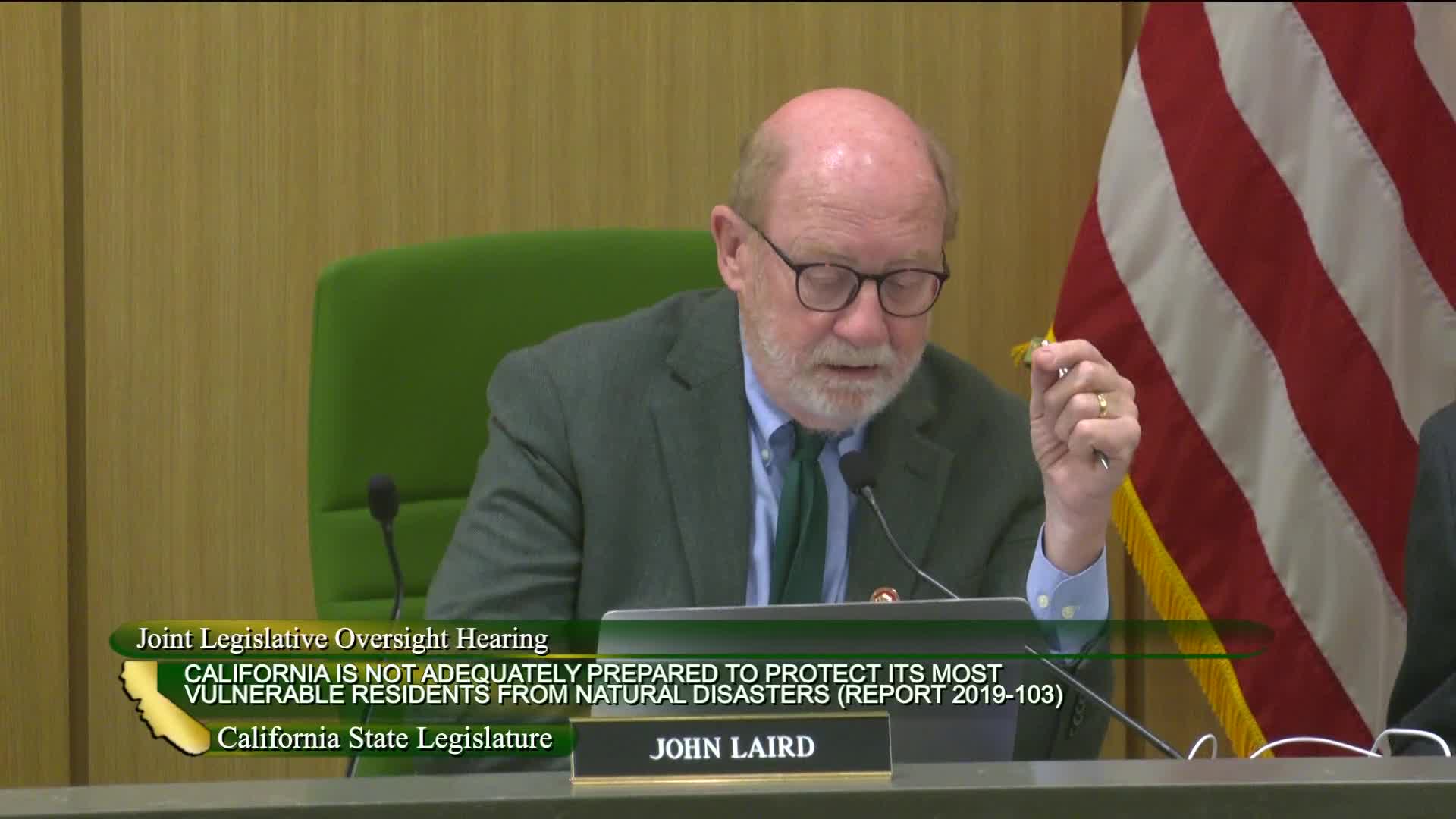California officials assess emergency management failures after devastating wildfires
March 05, 2025 | California State Assembly, House, Legislative, California
This article was created by AI summarizing key points discussed. AI makes mistakes, so for full details and context, please refer to the video of the full meeting. Please report any errors so we can fix them. Report an error »

On March 5, 2025, California's Joint Legislative Audit and Joint Legislative Committee on Emergency Management convened to address critical gaps in the state's emergency preparedness, particularly for vulnerable populations during natural disasters. The meeting highlighted the urgent need for improved evacuation plans and emergency alerts, especially in light of recent devastating wildfires.
Assemblymember Ransom, chair of the Assembly Committee on Emergency Management, opened the discussion by referencing a stark warning from a state auditor's report issued four years prior. The report revealed that California was ill-prepared to protect its most vulnerable residents, including seniors and individuals with disabilities, during disasters. Ransom emphasized that despite legislative efforts to enhance emergency planning, the state continues to face significant challenges, as evidenced by the tragic outcomes of the recent Eaton and Palisades wildfires. These fires disproportionately affected marginalized communities, with a high percentage of fatalities among elderly residents.
State Auditor Grant Parks presented findings from an audit that assessed the preparedness of local counties in managing emergencies. The audit revealed alarming deficiencies: none of the three counties reviewed had fully implemented necessary guidance for evacuating and sheltering vulnerable residents. Many emergency plans were outdated or incomplete, and there was a lack of engagement with groups representing these populations during the planning process. Parks noted that the California Office of Emergency Services (Cal OES) also struggled to provide clear and effective guidance to local jurisdictions, which hampered their ability to respond adequately to disasters.
The meeting underscored the pressing need for collaboration among state agencies, counties, and the legislature to ensure that emergency management systems are robust and inclusive. As California faces an increasing frequency of natural disasters, the discussions highlighted the imperative to prioritize the safety of all residents, particularly those who are most at risk.
In conclusion, the meeting served as a critical reminder of the ongoing vulnerabilities within California's emergency management framework. With the next wildfire or disaster looming, lawmakers and emergency officials must act decisively to address these gaps and ensure that no one is left behind when disaster strikes. The anticipated next steps include a thorough review of existing plans and the implementation of more effective strategies to protect vulnerable communities across the state.
Assemblymember Ransom, chair of the Assembly Committee on Emergency Management, opened the discussion by referencing a stark warning from a state auditor's report issued four years prior. The report revealed that California was ill-prepared to protect its most vulnerable residents, including seniors and individuals with disabilities, during disasters. Ransom emphasized that despite legislative efforts to enhance emergency planning, the state continues to face significant challenges, as evidenced by the tragic outcomes of the recent Eaton and Palisades wildfires. These fires disproportionately affected marginalized communities, with a high percentage of fatalities among elderly residents.
State Auditor Grant Parks presented findings from an audit that assessed the preparedness of local counties in managing emergencies. The audit revealed alarming deficiencies: none of the three counties reviewed had fully implemented necessary guidance for evacuating and sheltering vulnerable residents. Many emergency plans were outdated or incomplete, and there was a lack of engagement with groups representing these populations during the planning process. Parks noted that the California Office of Emergency Services (Cal OES) also struggled to provide clear and effective guidance to local jurisdictions, which hampered their ability to respond adequately to disasters.
The meeting underscored the pressing need for collaboration among state agencies, counties, and the legislature to ensure that emergency management systems are robust and inclusive. As California faces an increasing frequency of natural disasters, the discussions highlighted the imperative to prioritize the safety of all residents, particularly those who are most at risk.
In conclusion, the meeting served as a critical reminder of the ongoing vulnerabilities within California's emergency management framework. With the next wildfire or disaster looming, lawmakers and emergency officials must act decisively to address these gaps and ensure that no one is left behind when disaster strikes. The anticipated next steps include a thorough review of existing plans and the implementation of more effective strategies to protect vulnerable communities across the state.
View full meeting
This article is based on a recent meeting—watch the full video and explore the complete transcript for deeper insights into the discussion.
View full meeting
